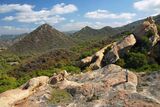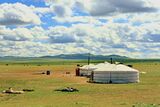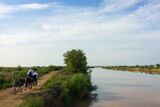Hacyinia: Difference between revisions
No edit summary |
No edit summary |
||
| Line 339: | Line 339: | ||
}} | }} | ||
The government of Hacyinia is a {{wp|Unicameralism|unicameral}} {{wp|Constitutional monarchy|constitutional monarchy}}. The Unified Assembly, the national parliament, operates as a {{wp|Dominant-party system|de facto one party system}} despite the existence of several opposition parties. The government was created as a merger from the {{wp|Absolute monarchy|absolute monarchy}} of Besshar and the {{wp|One-party state|one party}} [[Equalism|Equalist]] state of Syran in | The government of Hacyinia is a {{wp|Unicameralism|unicameral}} {{wp|Constitutional monarchy|constitutional monarchy}}. The Unified Assembly, the national parliament, operates as a {{wp|Dominant-party system|de facto one party system}} despite the existence of several opposition parties. The government was created as a merger from the {{wp|Absolute monarchy|absolute monarchy}} of Besshar and the {{wp|One-party state|one party}} [[Equalism|Equalist]] state of Syran in 1994 following the Unification of Hacyinia. Both Besshar and Syran reached a tenuous agreement, in which the Khan of Besshar would function as the Head of State and the Head of Goverment would be the prime minister, who has to be a Syranian. It was originally intended for the government to function in a {{wp|Consociationalism|consocialtionalist}} model, relying on the Royalist elites of Besshar and the former Equalist party officials of Syran in order to maintain stability in the country. | ||
<br> | |||
Political culture in Hacyinia is limited at best. Bessharia until unification was ruled as an absolute monarchy, while Syran was a auth Equalist one party dictatorship. Neither leadership group during the Unification process truly planned for the masses of the country to meaningfully participate. The younger generation of the xxxFormer Equalist Party wishes for more of a Dezenau inspired government/democratic processes/DemSocialism/Councilism, base of power mostly amongst the younger generations particularly in Syran. Bessharia is even more behind in political culture than Syran (At least Syran is used to casting votes, even if it was for only one party - longer hx of political dissent, etc.). Bessharia generally is distrustful of any sort of central government, loyalty more to the Khan than anybody else. | |||
<br> | |||
Foreign Relations - Syran had a lot of relations with the socialist bloc/equalist bloc. As Equalism as seen as more and more astray, Syran became increasingly isolated from the greater socialist world leading to the unification. Even today - Syranian leaders wish to align themselves more with Dez/Lav. Bessharia was a bit isolationist - had a lot of relations with Royalist Lav/Shah of Pardaran before their fall. Close with Zomia even now, developed closer relationships with Zorasan if only because of a mutual distrust of Dez. Gaullica is a sticking point - Bessharia likes Gaullica, Syran dislikes Gaullica. Bessharia distrusts Shangea, cultivates relationships with Senria in order to not be so reliant on immediate neighbors. Syran likely respects Shangea, also likely is a one way street. Syran is very practical - only really concerns relationships with immediate neighbors + socialist bloc. Bessharia cultivates relationships with a wide variety of folks. | |||
=== Military === | === Military === | ||
| Line 350: | Line 355: | ||
think Mongolia/Kazakhstan/similar stuff. Oil producing = 1,229,357 barrels per day? I think a big thing with the economy is that is actually could be really powerful, but, with the domestic shitshow going on its unlikely to reach anything close to it's potential in any due time. PetroLav has a pretty solid foothold in at least Syran. Talks within Besshar of building an oil pipeline through Zomia to Nav/Kuth to reduce dependence on immediate neighbors. | think Mongolia/Kazakhstan/similar stuff. Oil producing = 1,229,357 barrels per day? I think a big thing with the economy is that is actually could be really powerful, but, with the domestic shitshow going on its unlikely to reach anything close to it's potential in any due time. PetroLav has a pretty solid foothold in at least Syran. Talks within Besshar of building an oil pipeline through Zomia to Nav/Kuth to reduce dependence on immediate neighbors. | ||
<br> | |||
Bessharia = holds roughly 65%-70% of oil and mineral resources in the country. Limited agricultural (sans animal/pastoral products) and industrial activity in the country, as well as limited financial services and others. | |||
<br> | |||
Syran = Much more developed, varied economy. Has 30-35% of all oil/mineral resources in the country (originally assumed to be most if not all of it up until really the 1950s/60s(??). Much more extensive agricultural, industrial and financial services. | |||
== Culture == | == Culture == | ||
Revision as of 01:39, 21 February 2022
This article is incomplete because it is pending further input from participants, or it is a work-in-progress by one author. Please comment on this article's talk page to share your input, comments and questions. Note: To contribute to this article, you may need to seek help from the author(s) of this page. |
The Union of Hacyinia | |
|---|---|
|
Flag | |
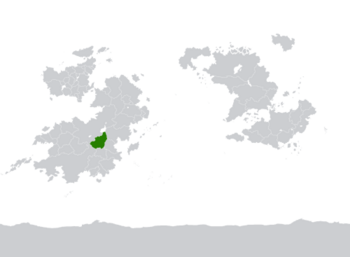 Location of Hacyinia on Kylaris | |
| Capital and | Choch |
| Recognised national languages | Pardarian, Gaullican |
| Recognised regional languages | Syran: Pasdewar, Ilkmen, Ziba Besshar: Beyek, Kacdag, Ukilen |
| Unrecognized regional languages | Chanwan |
| Ethnic groups | 45% Oroqic 48% Beyeks 52% Ilkmen 32% Pardarian 40% Kactag 60% Pasdewar 10% Chanwan 13% Other 46.5% Ukilen 38.5% Dezevauni 15% Other (Oeguns, others) |
| Religion | 45% Irfanic 40% Badi 6% Chanwan Folk Religion 5% Solarian Catholicism 2% Zohism 2% Other |
| Demonym(s) | Hacyinians |
| Government | Devolved unitary constitutional monarchy, with the parliament operating as a de facto one party government. |
• Khan | Makbule Arda Khan |
| Erasyl Rinat | |
| Legislature | Unified Assembly |
| Establishment | |
• Orto Khanate | TBD |
• Syr Khanate | TBD |
• Khanate of Bessar established | 1790 |
• Syran independence | 1935 |
• Peoples Equalist Republic of Syran established | 1949 |
• Unification | 1994 |
| Area | |
• Total | 1,031,116.80 km2 (398,116.42 sq mi) (31st) |
| Population | |
• 2021 estimate | 37,000,000 (~ 37th) |
• Density | 35.88/km2 (92.9/sq mi) |
| GDP (PPP) | 2021 estimate |
• Total | $363.7 billion |
• Per capita | $9,831 |
| GDP (nominal) | 2021 estimate |
• Total | $80.86 billion |
• Per capita | $2,185.54 |
| Gini | 41.9 medium |
| HDI | 0.654 medium |
| Currency | Hacyinian Som (HSM) |
| Internet TLD | .ha |
Hacyinia, officially known as The Union of Hacyinia and also known as Basshar-Syran or Syran-Basshar, is a country in Coius. It borders Dezevau and Lavana to the east, Zorasan to the north and west, Shangea to the southwest, and Zomia to south. A landlocked country, it straddles the boundary between Southeast Coius and the Great Steppe physically and Greater Pardarian as well as Greater Southeast Coius culturally. The 31st largest country , Hacyinia occupies 1,031,116.80 km2. The physical landscape of the country is defined by mountainous terrain to the west, vast and sprawling steppe through much of the central area of the country, and fertile river deltas in the east along the shore of Lake Zinabad. The 37 million citizens are multi ethnic, multi lingual and multi religious, who can trace their heritage from the mosaic of nomadic and settled peoples that have influenced the countries history. Population-wise, Hacyinia is roughly the 37th most populous country in the world.
Most of Hacyinia's history has been as the vague borderlands of various larger, centralized powers nearby sans for a few gleaming city states along trade routes or recognized khanates in the steppes. The lands of Hacyinia have been conquered by various powers from near, far and homegrown. There had been little unity between the western and eastern regions of the modern country, sans occasionally being conquered by the same empire. The modern state of Hacyinia starts in the 18th and 19th century, when the Khanate of Besshar established itself in the western side of the country - an initially loose confederation of ungovernable steppe tribes and rebellious city states that secured de facto independence from a declining Aguda Empire. Besshar was recognized as an independent state and a Gaullican protectorate following the collapse of the Aguda Empire and incorporation of former Agudaian territories into the Gaullican colonial empire. Following the Great War, Syran gained independence. Unstable from the onset, beset by multiple influences in the chaotic post-war era, an Equalist coup overthrew the country establishing the Peoples Equalist Republic of Syran.
Hostilities and tension quickly arose between the two countries as they attempted to enforce their claim to the vast steppe space separating them. Border skirmishes and open conflict was common for years. It wasn't until the joint decline of both countries governments due to domestic issues that unification, brokered by international agreement, was reached and went into effect in 1994. The following 28 years has seen a dysfunctional government, partly led by former members of the Equalist Party of Syran and partly led by the Khan of Besshar, muddle through in an almost perpetual state of political crisis. The Hacyinia Troubles has only increased over the years and now it is commonly recognized by many observers, both domestic and internationally, that Hacyinia is on the brink of collapse. Besshar separatists have become more vocal and active in demanding a "two state solution", while the Syranian-led central government refuses to allow any succession to happen. Both factions with foreign backing have been more or less preparing openly for some sort of showdown that many estimate will be coming soon.
Etymology
Hacyinia comes from the Old Pardarian word "hamicyia", meaning rebellious. The descriptor of the steppe peoples eventually came to refer to the whole general steppe area south of Pardaran proper. The word didn't gain a political meaning until the mid 20th century when the first ideas of unification between Besshar and Syran were proposed. When Besshar and Syran did unify and merge into one state in 1994, the name Hacyinia was chosen as the new state name.
The names of the two competent states of Hacyinia, Besshar and Syran, are both Oroqic and Pardarian blended words. Bessharia stems from the root Besshar which means "Five Cities" and Syran translates to the "Land of Syr/Sir". Bessharia first originated from the 18th and 19th centuries when the once fairly stateless region began to centralize around the oases city states nestled into the foothills of Mount Chanwan, forming a new polity in the face of the Aguda Empires slow collapse. Gaullican map makers dubbed the land "Bessharie" during the initial exploration of Greater Southeast Coius, initially believing that Besshar was the name of a tribe rather than of the collection of cities. It was eventually !Latinzed as Bessharia during the late 19th century. Syran stems from a much earlier time, and is the result of the eponymous founder of the Syr Khanate in the 11th and 12th centuries combined with the Pardarian suffix "-an" meaning "land of". Although the Syr Khanate collapsed shortly after it's founding, the Aguda Empire adopted the local endonym of the province which then became widespread.
History
Hacyinia has a long history, dominated mostly by the nomadic peoples that have ruled from the steppes as well as powerful empires who have conquered and held sway over the area. Although the area has long been inhabited with archeological records showing evidence of human settlement dating back to 6,000 BCE; the first recorded peoples in the area date back to the second millennia B.C with !Scythian/!Saka nomads domaining the steppes and settled Pardardian speaking city states establishing themselves in the eastern river deltas by Lake Zinabad, as well as in the foothills of the western mountains. The Chanwan had long called the highlands of western Hacyinia home and began establishing their own polity's in the highlands of the Huashan mountain range. In the southwestern steppe, in the modern day borderlands between Hacyinia, Zomia and Lavana, the proto-Oroqic Ashina held sway and competed with the !Scythians/!Saka for control of the steppe. The Ashina were able to establish several of their own powerful states controlling parts of Southeast Coius until just before the end of the 1st century CE.
The almost simultaneous Badi Reaction and the expansion of the Second Heavenly Dominion
- created a bunch of chaos
- Irfanic Oroqic tribes closer to Lake Zinabad were like nah we're good, we're going to hang out with the Pasdewars instead of you Badist bums to the south
- in general some wildness. Badism survived in the SW/W of Hacyinia mostly due to the foothills/slightly mountainous terrian gave people something to defend and made invasions diffiuclt (plus gotta get through the steppe first). E Hacyinia didn't really have that, was able to be conquered and converted fairly easily.
- saw much of E Hacyinia/Syran de facto/de jure a part of the 2nd Heavenly Dominion, while W Hacyinia/Besshar was only de jure.
- start of much of the religious/ethnic spilt within the country.
Following the Tagamic Migrations
- Oroqic tribes moved in to take the places of everybody else who had migrated, further adding to the chaos of the period.
- Hacyinia was largerly unaffected? It was like the very eastern edge of the steppe and everybody seemed to be more concerned with heading up through Zorasan to Euclea.
- Start of Oroqic domniance in the steppe.
- Svai Empire ruling over Besshar during this time
The era of the Khanates
- Era of Turkic khanates and their dominance in at leas the eastern part of the steppe/around the Hushan mountain range. Maybe frequent wars with the Chanwan? Wars with neighbors for sure. Two "native khanates" with the Orto Khanate + the Syran Khanate during this time that emerged right after the other.
Aguda Empire, direct control in the east and suzerainty in the west
- Aguda Empire directly administered Syran. Utilized Clear Water Sect elites to administer country. Promoter of agriculture/irrigation/urbanization, Ziba speakers move into the area. Most of Syran has been Irfanic since the Heavenly Dominion.
- Aguda Empire attempted to also directly admin Besshar, not really able to happen outside of the urban areas. Ended up relying on just being the suzerains of the nomadic Badist Beyek, Ukilen tribes as well as the semi-nomadic Kacdags, which was an arrangement almost everybody could agree upon. Still issues with occasional tribal raids and when the suzerainty was being competed with?
- Syran came to be a core part of the Aguda Empire, and over the several hundred years of Aguda direct rule largely came to see itself as part of the wider Aguda Empire rather than "Syran." The lands of modern day Bessharia in turn began to exert more and more independence in their own affairs as the steppe tribes and city states of Besshar began to build the beginnings of a state during the decline of the Aguda Empire.
Gaullican Syran + Independent Besshar
- As Gaullica assumed direct control over the core of the Aguda Empire, also assumed control over Syran. Syran became a large cotton exporter during the colonial period, as well as vast mineral reserves exploited. Later on, oil (~35% of total Hacyinia production) was found and added to the economic value of Gaullican Syran.
- Besshar/Bessharia was in an awk. situation being surrounded by an expanding Shangea, Eturia coming down through Zorasan, and then Gaullica nearby and who knows who else. Some inital conflict broke out between Gaullica + Besshar but mostly inconclusive expeditions on both sides. Besshar agreed to protectorate status with Gaullica, giving Gaullica de jure control over the countries foreign affairs - but de facto the position was heavily competed by all nearby colonial powers ("The Smaller Game")
- Understanding the grave risk presented to them, Besshar responded by further uniting the looser tribal confederation into a more centralized state at the risk of independence. Still very decentralized, almost feudal like in a lot of ways.
- General tracks during this period - Syran turned away from Euclean influence, took cues from Dezenau and began adopting an anti-colonist mindset especially in the midst of the great war. Besshar on the other hand cautiously welcomed Euclean influence into the country, viewing it as a source of modernization/power/wealth. !Gurkhas from Besshar served in the Gaullican forces (often as a tool of colonial repression).
- Great War - Syran saw similar treatment as the rest of Gaullican holdings during the great war, probs a fair amount of conscription. Besshar stayed out of the whole thing sans being Gaullican aligned, although I can imagine that towards the tail end of the war probs did at least some sort of symbolic turn towards the victors.
Independent Syran, then Peoples Equalist Republic
- Syran was granted independence at 1935 in the peace processes following the war. Everybody had sort of shrugged and stated that they didn't really want to deal with the place and haphazardly granted it indepdence in a rushed manner.
- Initally an Euclean parliamentary style republic, very much a mess from the get go with no real structure or political development in place for the country to be independent - it had spent almost it's entire history as a part of one empire or another, and within a few months it was expected to function as an indepdent state.
- The wavering of the state led to an Equalist/Sattirst/National Princpalist inspired coup - establishing the Peoples Equalist Republic of Syran.
Conflicts/"two state period"
Decline of both states
Unification and The Troubles.
Geography
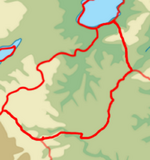
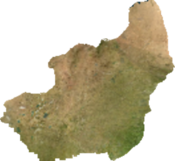
At 1,031,116.80 km2, Hacyinia is the 15th largest in Coius, and the 31st largest in the world. It is slightly smaller than Behera and slightly larger than Belmonte. A landlocked country, it has a minimally varied terrain. The country is overwhelmingly steppe land, with some geographic diversity in the west with the Transhuashan foothills and in the east riverine deltas in low valleys. The elevation of the country varies greatly however, with some areas being several thousand meters above sea levels and others being several hundred meters below sea levels. Generally elevation rises the in the west and closer to the Huashan mountains.
Arable land is at a minimum, with most of the water in the central steppes of the country coming from oases and seasonal rivers. The steppes soil is incapable of supporting any sort of large scale agriculture, although it is more than capable of supporting large scale animal husbandry both historically and modern day. The "steppe" of the country often interchanges between what is technically considered savanna, with much longer grasses, as well as true steppe with much shorter grasses.
Most of the countries arable land is concreated in the east along the shore of Lake Zinabad and the river deltas near the shore, or in the west in mountain oases supplied by the melting glacial water of the Huashan mountains. The country almost is entirely considered to be within a semi-arid climate zone, with warm summers and cold winters. Rainfall is dependent on the season, with the winter being typically much dryer than the summer. In addition, temperature swings can greatly vary from day and night.
Wildlife
Bactarian deer! Bactarian camels! Wolves! There's brown bears in Central Asia apparently? Snow lepords, cut & paste from stuff
Demographics
8,339,800 Beyeks 8,680,200 Ilkmen
4,107,000 Kacdags 6,993,000 Pasedwars
4,070,000 Chanwan
2,236,650 Ukilen 1,851,850 Dezenaui 721,500 Other
Besshar total: 15,044,200 Besshar including Chanwan: 19,114,200 Syran: 17,885,800
Population is actually suprinsingly dense and kinda urbanized? Since most of the population is on either the far western or the far eastern sides of the country, just a bunch of open space in the middle. Solid chunk of the population still practice nomadism.
Urbanization
cities: Besshar: Maymana Tuska* Kucha Tulean Kashkent
Syran: Choch ** Halac Satlyk Shirvan Babak
Government and Politics
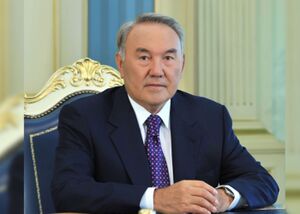
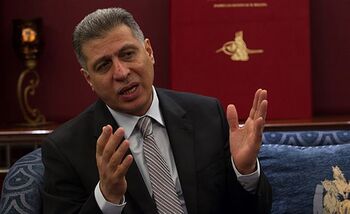
The government of Hacyinia is a unicameral constitutional monarchy. The Unified Assembly, the national parliament, operates as a de facto one party system despite the existence of several opposition parties. The government was created as a merger from the absolute monarchy of Besshar and the one party Equalist state of Syran in 1994 following the Unification of Hacyinia. Both Besshar and Syran reached a tenuous agreement, in which the Khan of Besshar would function as the Head of State and the Head of Goverment would be the prime minister, who has to be a Syranian. It was originally intended for the government to function in a consocialtionalist model, relying on the Royalist elites of Besshar and the former Equalist party officials of Syran in order to maintain stability in the country.
Political culture in Hacyinia is limited at best. Bessharia until unification was ruled as an absolute monarchy, while Syran was a auth Equalist one party dictatorship. Neither leadership group during the Unification process truly planned for the masses of the country to meaningfully participate. The younger generation of the xxxFormer Equalist Party wishes for more of a Dezenau inspired government/democratic processes/DemSocialism/Councilism, base of power mostly amongst the younger generations particularly in Syran. Bessharia is even more behind in political culture than Syran (At least Syran is used to casting votes, even if it was for only one party - longer hx of political dissent, etc.). Bessharia generally is distrustful of any sort of central government, loyalty more to the Khan than anybody else.
Foreign Relations - Syran had a lot of relations with the socialist bloc/equalist bloc. As Equalism as seen as more and more astray, Syran became increasingly isolated from the greater socialist world leading to the unification. Even today - Syranian leaders wish to align themselves more with Dez/Lav. Bessharia was a bit isolationist - had a lot of relations with Royalist Lav/Shah of Pardaran before their fall. Close with Zomia even now, developed closer relationships with Zorasan if only because of a mutual distrust of Dez. Gaullica is a sticking point - Bessharia likes Gaullica, Syran dislikes Gaullica. Bessharia distrusts Shangea, cultivates relationships with Senria in order to not be so reliant on immediate neighbors. Syran likely respects Shangea, also likely is a one way street. Syran is very practical - only really concerns relationships with immediate neighbors + socialist bloc. Bessharia cultivates relationships with a wide variety of folks.
Military
Maybe at one point kinda solid? But now largerly the central military is just existing on paper, much of the military is more or less more loyal to either Besshar/Syran then they are to the entire state. Paramilitary orgs, unofficially offically backed by each side, has become the norm as each side prepares for a reality where there may be a civil war/war for indepdence if stuff cant get figured out .
Economy
think Mongolia/Kazakhstan/similar stuff. Oil producing = 1,229,357 barrels per day? I think a big thing with the economy is that is actually could be really powerful, but, with the domestic shitshow going on its unlikely to reach anything close to it's potential in any due time. PetroLav has a pretty solid foothold in at least Syran. Talks within Besshar of building an oil pipeline through Zomia to Nav/Kuth to reduce dependence on immediate neighbors.
Bessharia = holds roughly 65%-70% of oil and mineral resources in the country. Limited agricultural (sans animal/pastoral products) and industrial activity in the country, as well as limited financial services and others.
Syran = Much more developed, varied economy. Has 30-35% of all oil/mineral resources in the country (originally assumed to be most if not all of it up until really the 1950s/60s(??). Much more extensive agricultural, industrial and financial services.
Culture
Culturally Besshar is more turko-mongol, Syran is more turko-persian. Heavy influence from SE Asia, I imagine national food sorta similar to the Uyghurs/Hazaras? You know we be making rugs. Besshar is Badist, Syran is Irfanic. some Euclean influence penetrated Besshar/Syran.
Sport
Rugby union is most popular team sport. og known as tülkhekh (mongolian)/sxojyn (oss)/ïterw (kaz) ["to push"]; Eucleans were like "damn I know a game like that" and introduced rugby to folks proper. Much more popular in the west, used as a piece of cultural/'civilizing' imperialism. "rugby diplomacy" was/is a strategy used by Besshar and to a much less extent Hacyinia in order to build diplomatic relationships with primarily Euclean and other countries to avoid being so overly dependent on the neighbors. Syran following the equalist revolution was like "nah we dont rugby anymore because it's bourgeoius af" and was more of the gymnastic socialist. Maybe their more into soccer?
Kokpar also very popular, as well as other equestrian games/activities owing to countries steppe and horse culture. Mongolian wrestling/Turkic wrestling also popular. Something like Naadam very possible.

